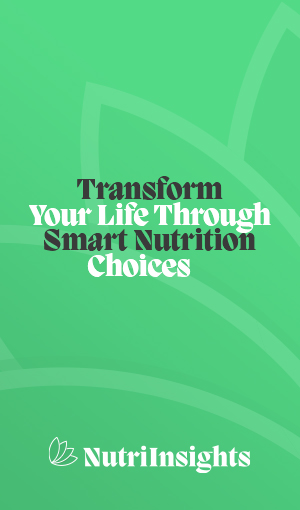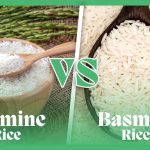Among the ever-popular pieces of poultry that include tender breasts, fleshy thighs, and crunchy drumsticks, there lies hidden amidst the soft and colorful layers of feathers, a tiny yet powerful organ- the pumping chicken heart. This conical-shaped chewy and delicious organ is a part of various delicacies around the globe and imparts health benefits to the human body.
In this article, we will embark on a journey to explore the many sides of this culinary delight. Buckle up because you are in for an exciting rollercoaster ride.
What is it?
Chicken heart- as the name suggests, is simply the heart of the chicken. This energy-dense and nutrient-dense muscle is firm yet chewy and tender in texture, with a slightly metallic and sweet flavor. It is considered an offal (the internal organs of an animal used as food) making it a nutritional powerhouse packed with proteins, healthy fats, vitamins, and minerals.

Nutrient composition of chicken heart:
One chicken heart weighs 6.1 g, so one serving (100 grams or 3.5 ounces) incorporates approximately 16 hearts. It is a rich source of proteins as 3.5 ounces of chicken heart contains 15.6 g of proteins, 9.33 g of total fat, and as low as 0.71 g of carbohydrates.
Nutritive score:
Chicken heart is a nutrient-dense food with a nutritive score of 689. Nutri-score is a labeling system assigned to foods that exhibit the nutritional value of food and beverages. Chicken hearts are rich in B complex vitamins and essential minerals such as Calcium, Iron, Magnesium, Phosphorus, Potassium, Sodium, and Zinc.
| Nutrients (per 100g) | Amount |
|---|---|
| Energy | 153 kcal |
| Proteins | 15.6 g |
| Fats | 9.33 g |
| Carbohydrates | 0.71 g |
| Calcium | 12 mg |
| Iron | 5.96 mg |
| Magnesium | 15 mg |
| Phosphorus | 177 mg |
| Potassium | 177 mg |
| Sodium | 74 mg |
| Zinc | 6.59 mg |
| Folate | 72 mcg |
| Thiamine (vitamin B1) | 0.152 mcg |
| Riboflavin (vitamin B2) | 0.728 mcg |
| Niacin (Vitamin B3) | 4.88 mcg |
| Panthotenic acid (Vitamin B5) | 2.56 mcg |
| Cobalamin (Vitamin B12 | 7.29 mcg |
Role in human nutrition:
Chicken heart offers a wide range of benefits, including:
Muscle growth:
Protein intake in general is crucial for healthy metabolism, improved body composition, and a strong immune system. The protein-rich chicken heart is not only vital for muscle growth; it also provides structure to the body.
Better oxygenation:
Iron deficiency is one of the most common nutrient deficiencies in the world that affects mainly women, toddlers, and young girls. This deficiency is reduced by consuming iron-rich foods such as chicken heart- a good source of heme iron. Iron aids in crucial physiological processes like DNA synthesis, oxygen transport, healthy fertility, and Red blood cell production.
Iron with vitamin B12 (cobalamin) is fundamental for hemoglobin production, a protein in RBCs that carries oxygen in the blood. In addition, B12 also helps with brain and nervous system health, dementia, Alzheimer’s disease as well as depression. Vitamin B12 has also been studied to be cancer-protective through supporting folate metabolism.
Better mood:
Are you stressed and anxious from an exam or an upcoming interview or suffer from anxiety in general? Have a hearty meal of chicken heart.
Anandamide- a fatty acid in chicken heart, aids in feel-good neurotransmitters. The electrolytes found in this organ meat also reduce stress and regulate mood.
Weight loss:
Protein intake keeps you full for a long time, decreases the untimely cravings, and increases the feeling of fullness that aids in weight loss. The amino acid methionine in chicken heart speeds up the liver’s functionality to break down fats easily.
Body functions:
Protein is an integral part of major body functions including skin, nails, hair, and internal organs. The heart is home to twice as much collagen and elastin than other meat organs, declaring it essential for healthy skin and hair.
Improved stamina:
B12 abundantly found in chicken heart, reduces fatigue and improves stamina. That makes it a great food for athletes and even common people aiming to increase their power.
B12 also assists in melatonin production, a hormone vital for good sleep so you stay energetic the whole day.
Synthesis of chemicals:
Zinc facilitates in production and balance of macronutrients carbohydrates, proteins, and fats.
Bones and teeth:
Phosphorus found in chicken hearts is responsible for the growth and maintenance of bones and teeth, cell division, and metabolism.
Adverse effects of chicken heart:
Chicken heart imparts various body functions; however, its consumption might not be beneficial for those suffering from some disorders.
Elevated uric acid levels:
People with gout are generally advised to limit their consumption of purine-rich foods. The chicken heart may not be suitable for people suffering from gout as it contains purines, a compound rich in organ meats. Uric acid, a waste product of purines accumulates in your joints, thereby causing a flare-up of the gout.
High cholesterol levels:
The cholesterol levels of the chicken heart are fairly high, as 100g of the chicken heart provides 242 mg of cholesterol. People with elevated cholesterol levels may want to limit their chicken heart intake. Though blood cholesterol majorly comes from the liver and not from diet, you may still opt for lean options of meat.
Nonalcoholic fatty liver disease:
Consumption of chicken heart might likely put you at risk of non-alcoholic fatty liver disease. NAFLD is associated with high levels of fats in the liver despite the consumption of alcohol. Studies suggest that organ meat increases the fat content in the liver thus elevating the risk of NAFLD.
How much chicken heart is enough to eat per day?
The chicken heart is an excellent option for getting an adequate amount of protein alongside other nutrients, making it one of the most concentrated nutritionally packed foods.
Amino acids are the Building blocks of various essential functions in the body whose deficiency is detrimental to health. A deficiency of proteins causes edema, poor muscles, brittle and thin hair, dull skin, and underweight children. The accepted micronutrient distribution range for protein is 10-35% of calories from the total ones.
The RDA for protein is 0.8g per kilogram of body weight, so a person weighing 60 kg needs 48 grams of protein per day to carry out all the necessary bodily functions. Keep in mind that this is the minimum daily amount and one can go up to 1.2 to 1.8 grams for the same amount of weight, depending on their requirement.
Broiler chicken heart versus country chicken heart:
We all are highly aware of the differences between the broiler chicken and country chicken, but do we know if there is any difference between their hearts as well? Yes, they vary in terms of size, flavor, texture, and even nutritional benefits.
Broiler chickens bred specifically for their meat, have larger and plumper hearts as compared to organic country chicken.
The flavor of both types of chicken is highly dependent on their food intake. Broiler chickens grown in controlled environments have milder flavor in their heart than country chickens that are fed on a more natural diet. While country chicken hearts are firmer and harder than broiler chicken, they are tender and soft due to their young age and less muscle content.
Country chicken hearts possess more muscle and fat along with vitamin and mineral content than broiler chicken, hence might impart more benefits than the latter.
Chicken heart for pets:
Are you a pet parent and have usually witnessed people offering chicken hearts to their pets, especially dogs, and want to know if you can feed it to your dog as well?
The above question has a very simple three-letter answer: Yes! Chicken hearts as discussed earlier are packed with proteins, essential vitamins, minerals, and omega 3 fatty acids that are beneficial not only for humans but for dogs as well. However, try not to overfeed them as it may lead to a nutrient imbalance in the body.
Cooking of chicken hearts:
Chicken hearts are available in every grocery store, however, if you want the fresh ones, head to your local butcher shop or specialty stores. Let’s discuss some of the cooking methods of this organ meat that every novice can easily follow.
Panfry chicken hearts:
Chicken hearts can be cooked in several ways but one of the most common ways is to panfry them. The ingredients you will need for this are:
- Chicken hearts
- Olive oil
- Seasonings such as garlic powder, salt, pepper, cumin, chili flakes
Toss chicken hearts onto the pan, cook them on medium-high heat for 5-10 minutes, and serve them alongside your favorite stir-fried vegetables such as onions, potatoes, mushrooms, capsicum, and carrots.
Grilled chicken hearts:
Marinate chicken hearts in a bowl with your preferred spices such as salt, pepper, chili flakes, garlic powder, paprika, lemon juice, and cumin. Grill them over medium-high until they are soft and cooked and serve.

Skewered chicken hearts:
Put chicken hearts onto skewers and grill them until they are cooked to perfection and give off a golden brown color.

Curry chicken hearts:
Cooking chicken hearts in a curry is one of the easy methods, all you have to do is add them to your favorite curry and let them simmer until they are nice and soft.

Salad chicken hearts:
Adding chicken hearts to your salad might sound surprising, but this is also one of the ways to get that protein in your diet. Add cooked chopped chicken hearts to your bowl of greens alongside some fresh vegetables.
In a nutshell, chicken heart might not be the preferred choice of organ meat for the majority of people, but this tiny nutrient-packed muscle offers countless benefits to the body, hence the need to include it in our diet is pivotal.











[…] Hey there, fellow food enthusiasts and health aficionados! Today, I'm thrilled to shine a spotlight on a culinary gem that's often overshadowed by its more mainstream counterparts: chicken hearts. Yes, you heard me right those petite powerhouses bursting with flavor and packed with nutrition. In this deep dive, we're embarking on a culinary adventure to explore why chicken hearts deserve a prime place on your plate. […]